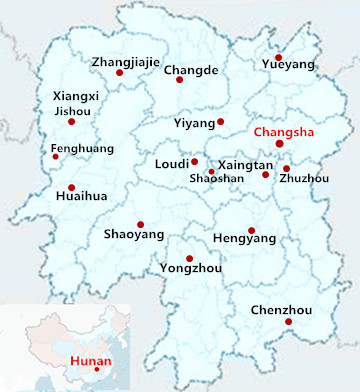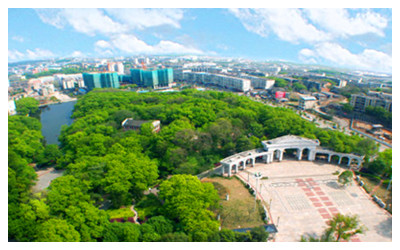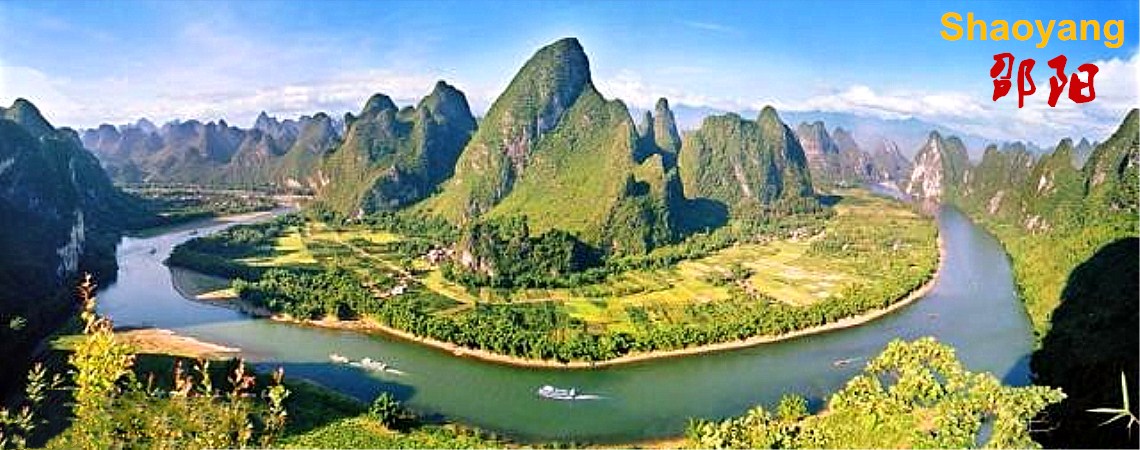 city is located in the southwest of Hunan Province, Zijiang and Shaoshui are the main rivers, passing through the city. It has the most population and second largest land area among the cities in the province. Nabu County is seated next to Guangxi in the south and not far away from Longsheng. With an area of 20,876 square kilometers ranking the second in Hunan and with a population of 7.4763 million ranking the first in Hunan, It has always been the important city of Hunan for 2500 years.
city is located in the southwest of Hunan Province, Zijiang and Shaoshui are the main rivers, passing through the city. It has the most population and second largest land area among the cities in the province. Nabu County is seated next to Guangxi in the south and not far away from Longsheng. With an area of 20,876 square kilometers ranking the second in Hunan and with a population of 7.4763 million ranking the first in Hunan, It has always been the important city of Hunan for 2500 years.Chinese Name: 邵阳市 (shào yáng shì)
Population: 7,300,000
Area: 20,829 square kilometers (8,042 square miles)
Nationalities: Han, Miao and other 38 ethnic minorities
Administrative Division: 3 districts (Shaungqing, Daxiang, Beita); 7 counties (Shaodong, Shaoyang, Xinshao, Longhui Dongkou, Suining, Xinning); 1 autonomous county (Chengbu Miao); 1 county-level city (Wugang)
Seat of the City Government: Chengbei Lu, Shuangqing District
Geography of Shaoyang
 Shaoyang lies in the transition area from hilly area to plateau. Branches of Naling Mountains and Xufeng Mountain stand in its south, west and north. Hills and basins are distributed in the central and eastern parts of the city. Generally, the terrain declines from the southwest to the northeast. It also has large forests, ranking one of the major four forest zones of Hunan.
Shaoyang lies in the transition area from hilly area to plateau. Branches of Naling Mountains and Xufeng Mountain stand in its south, west and north. Hills and basins are distributed in the central and eastern parts of the city. Generally, the terrain declines from the southwest to the northeast. It also has large forests, ranking one of the major four forest zones of Hunan.
History of Shaoyang
The area was called Baoqing in history. The earliest city was established here 2,500 year ago, during the late Spring and Autumn Period. Among the total thirty-six administrative areas in the Qin Dynasty, it was governed by Changsha and belonged to Lingling in Eastern Han Dynasty. During the Three Kingdoms Period, Lingling was divided into northern and southern parts and Shaoyang was just the heart of north region.
Tourism of Shaoyang
There are many ethnic minorities here, which is a large group made up of nearly 400,000 people. Flower Drum Opera is a famous folk art in Hunan. Shaoyang local also prefer this. In addition, the place also has its own styles of art, blend with instruments, songs, performances and ballads. It teems with orange and now a new industrial city of the region.
 The city of Shaoyang is a large green stretch of land in the western part of Hunan Province. It boasts a broad area of grassland in the Nanshan Scenic Area in Chengbu County, the luxuriant Yunshan National Forest Park, the crimson rock formations on Mount Langshan, rare animals and plants at Huangsangping in Suining County, as well as hot springs in the Longhui Huayao Scenic Area. Besides the unique natural sights, there are also many cultural spots in Shaoyang. The city has a long history of Wuchu culture and Meishan culture. The customs of the Miao and Dong ethnic groups are fascinating. What's more, many famous people in Chinese history such as Wei Yuan and Cai E left their footprints in Shaoyang. All the attractions above jointly make the city a miraculous oasis.
The city of Shaoyang is a large green stretch of land in the western part of Hunan Province. It boasts a broad area of grassland in the Nanshan Scenic Area in Chengbu County, the luxuriant Yunshan National Forest Park, the crimson rock formations on Mount Langshan, rare animals and plants at Huangsangping in Suining County, as well as hot springs in the Longhui Huayao Scenic Area. Besides the unique natural sights, there are also many cultural spots in Shaoyang. The city has a long history of Wuchu culture and Meishan culture. The customs of the Miao and Dong ethnic groups are fascinating. What's more, many famous people in Chinese history such as Wei Yuan and Cai E left their footprints in Shaoyang. All the attractions above jointly make the city a miraculous oasis.Economy of Shaoyang
Shaoyang once was major industry city in China. After tens years effort, it has evolved a complete industrial system such as machinery, textile, chemicals, medicines, building materials, paper industry, food processing and etc. Since the reform and opening-up to the outside world, transportation, telecommunication, energy resource, infrastructure have been further strengthened and the social and economic order have been improved obviously.







